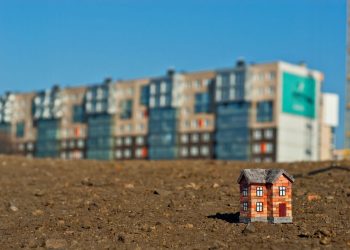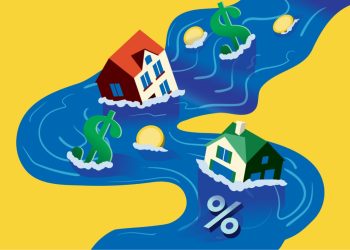With a focus on the yet-unknown effects stemming from the sudden collapse of two large, regional banks, experts are saying the path forward for multi-family and commercial real estate remains just as uncertain as residential, if not more.
At a National Association of REALTORS® (NAR) Forecast Summit on March 22, Dr. Lawrence Yun, NAR’s chief economist, and Dr. Caitlin Sugrue Walter, vice president of research at the National Multifamily Housing Council (NMHC), broke down the factors affecting apartment and office property values, borrowing costs and new building, looking particularly at some of the macroeconomic shifts and policy propositions that could upend the industry.
“I think a lot of people both on the consumer side as well as on the finance side, the business side—everybody is kind of in this holding pattern, trying to figure out what the heck is going on with the economy,” said Walter. “I think a lot of people are kind of taking a pause.”
Even before Silicon Valley Bank in California and Signature Bank in New York, new inflation data and a hawkish Fed had poured cold water on the idea that the economy would transition smoothly from the pandemic. Certain housing sectors—office and retail specifically—were already struggling due to remote work shifts and supply costs, according to Yun.
Now, looking ahead in the context of these bank runs, Yun said it is impossible to predict for certain, but easy to see how commercial or multifamily builders could suffer further in the near future.
“Many regional banks may begin to say, ‘I don’t have enough money for commercial lending.’ So it’s a very tough environment for commercial practitioners in terms of trying to access borrowing through regional banks,” he explained. “Through big banks, maybe it’s possible.”
Walter said that she is “still in the information gathering phases” in regards to how the bank collapse has (or will) disrupt multifamily housing, but agreed that it would be an “issue.” Right now, there is equity financing available, she said, although NMHC would be surveying members again in the future.
“We were hearing instances where folks were able to get construction loans because of an existing relationship with a (regional) bank,” Walter said, “but if that bank does not have the ability to lend now, what does that mean?”
Overall, Yun said he expects a flat or “slight contraction” in commercial lending over the next year, and the potential for some regional drops in value that could put some commercial buildings underwater.
Looking at government data, commercial appraisal values are about 2% off their recent peak, according to Yun. But private data, which uses actual transactions rather than appraised value, are down much further—16%.
Yun also showed that warehouse construction has surged ahead of retail, a trend that has persisted beyond the pandemic. That is likely to continue into the future, Yun said, with warehousing construction almost doubling since 2019 (measured in dollars spent) while retail dipped before flattening out—roughly the same as 2019.
Retail struggles aren’t across the board, however, with growth in the suburbs, where remote workers still want to do at least some shopping and dining in person.
Office space is “truly the weak sector” within commercial real estate, however, according to Yun. An 18.1% vacancy rate now could climb even further, he said, (assuming there aren’t major conversions of these spaces).
Apartments and multifamily remain deeply mixed, even more so now than a couple weeks ago. On the one hand, completions on these buildings are at a 40-year high, according to Yun, and Walter said there was some evidence that transactions could be rebounding after dipping hard after the pandemic.
On the other hand, the bank collapse, higher interest rates and worries about local regulation—from zoning to rent control to NIMBY opposition—have all shaken the foundations of the multifamily market.
“It’s causing another layer of uncertainty in a time period when we have a lot of layers of uncertainty,” Walter said.
While the motivation for many of these policies is to address an acute affordability crisis, Walter showed that developers are saying they are less likely to build in areas with rent control or inclusionary zoning policies.
But that affordability issue is indeed “a big problem,” Walter admitted. It is “virtually impossible” to build any type of apartment besides those targeted at higher income brackets, and a large portion of the estimated 4.3 million rental units needed to meet demand have to be affordable.
“It takes a long time for apartments to filter down to the next (price) level,” Walter said.
There are also regional needs that aren’t necessarily being met, with 1.5 million units needed in Texas, Florida and California alone. Data from this year on permits and new constructions have so far been positive, but Walter said they need more data before they can characterize that as any kind of rebound.
Another interesting data point is so-called “absorptions”: the number of folks that are moving into new apartments relative to the number of apartments out there. Absorptions have also fallen for homebuyers, so the question is, where are people going?
Again, the answer might have to do with uncertainty (and affordability), Walter said.
“That’s a big question mark. Is it folks who are just uncertain about the state of the economy?” she asked. “Are people staying at home because they’re just stretched too much, so they’re living with mom and dad, living in the basement? It remains to be seen.”












